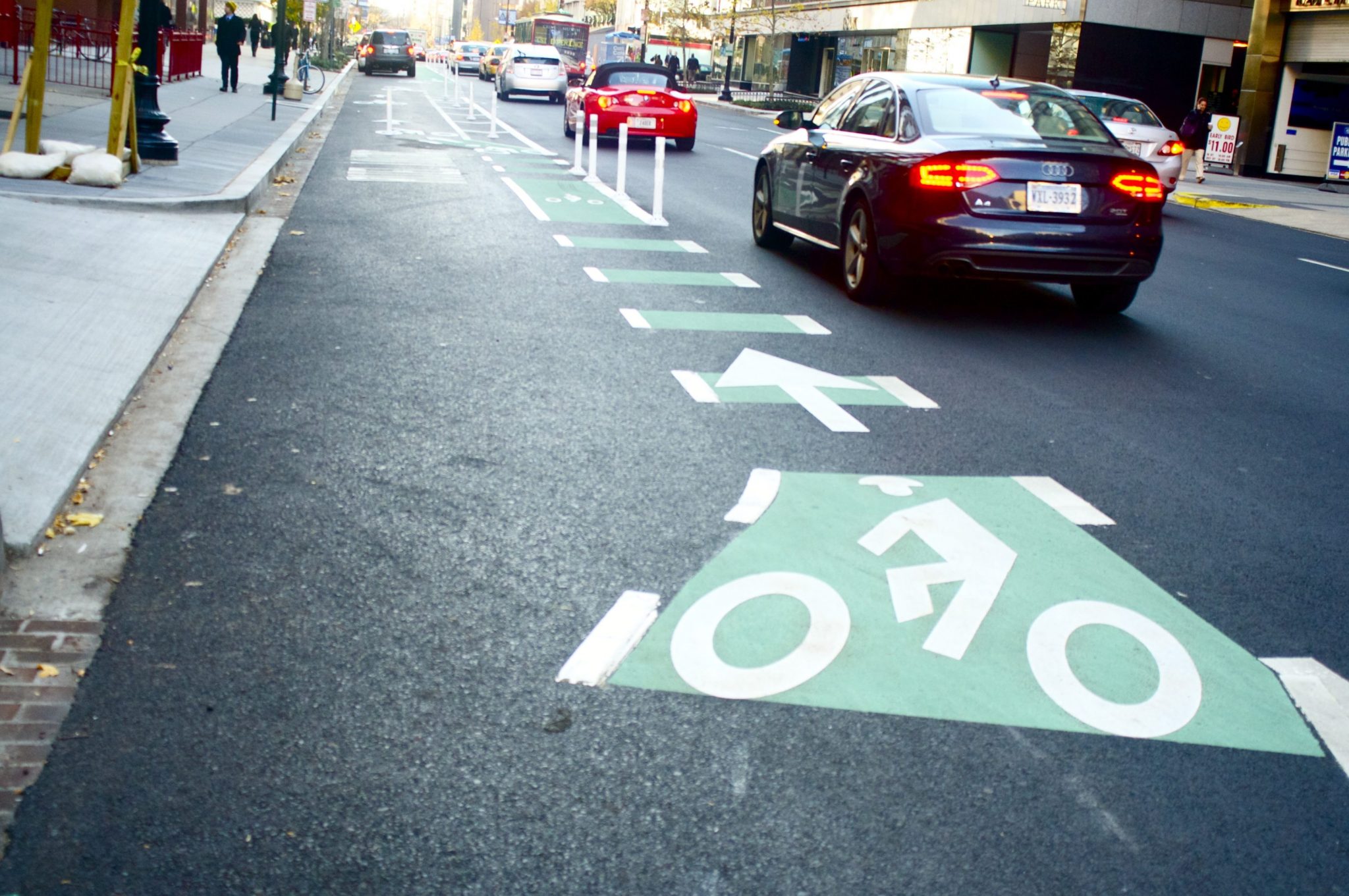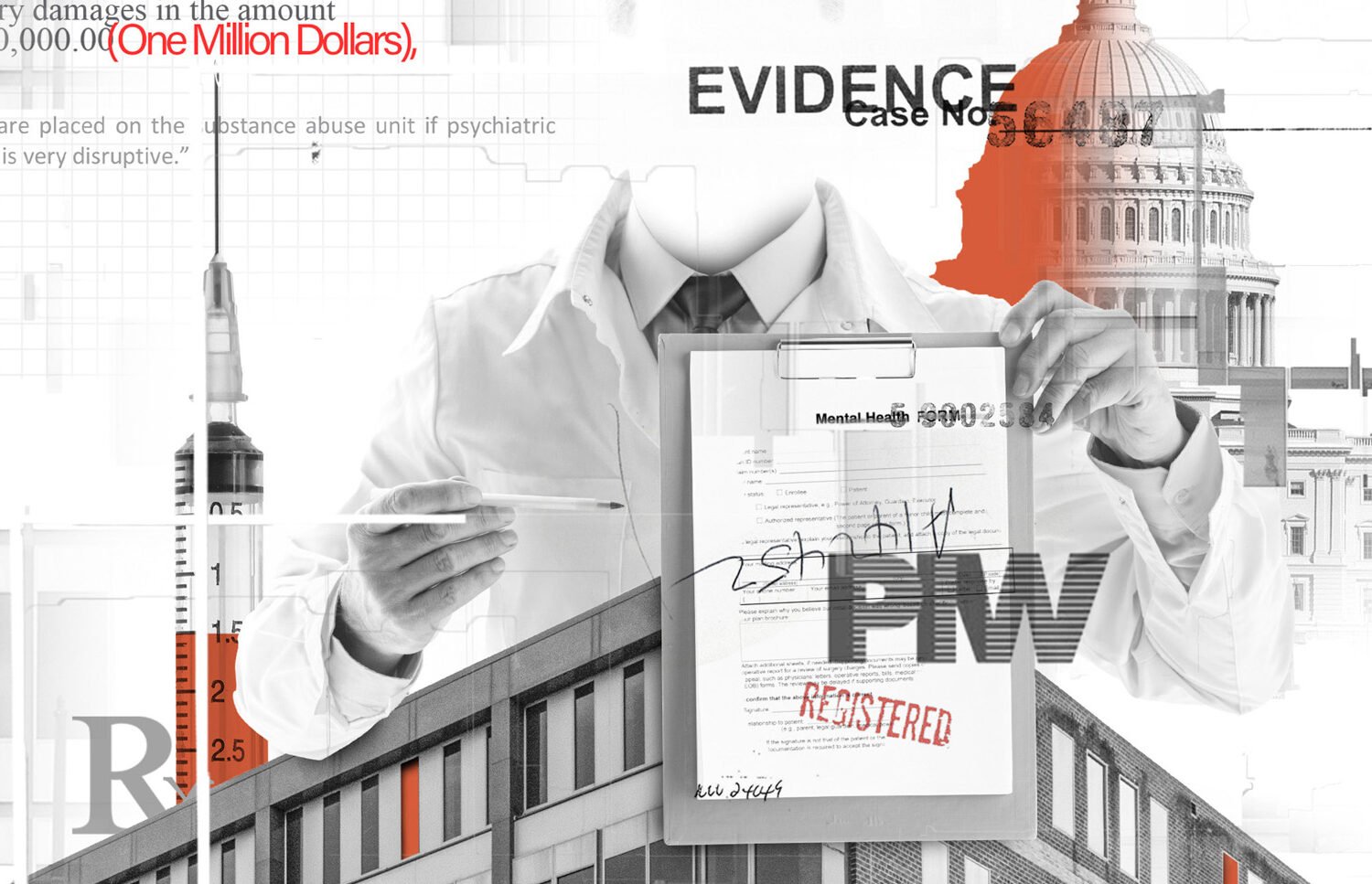The installation of the L Street Cycle Track, which Mayor Vincent Gray officially opened with a ribbon-cutting ceremony on Tuesday, has elicited excitement, frustration, and downright confusion among cyclists and drivers alike.
In our offices, located on L Street, some of our avid bike commuters join the rest of the cycling community and cheer the new cycle track, which features a protected lane painted in green and joins the existing bike infrastructures on 15th Street and Pennsylvania Avenue.
The installation is “a really big deal,” wrote bike commuter Brian McEntee in an e-mail to Well+Being. “It’s about recognizing that people have, are, and will continue to bike for transportation in DC, and they deserve a separate and safe place for this.”
In recent years, DC has been recognized nationwide for its efforts to become a more bike-friendly city, starting with the ever-expanding Capital Bikeshare program. The District has one of the highest bike-to-work rates in the country, at 2 percent, and with the L Street Cycle Track, the city now has almost four miles of protected bike lanes and 56 miles of bike lanes total. Next year, the city plans to install another cycle track on M Street, which will run parallel to L Street and head in the opposite direction toward Georgetown.
“I know a fair amount of people who are scared to bike in DC,” says Serena Golden, another bike commuter. “I think things like the new cycle track may well make some folks more comfortable with the idea.”
But despite the applause from the cycling community, there are still plenty of complaints and head-scratching among drivers.
To create the separate bike lane, the District Department of Transportation (DDOT) had to eliminate 150 parking spaces—which hasn’t stopped countless delivery trucks and drivers from parking in the lane (which, it’s worth mentioning, is now illegal). Driver William Graham told ABC 7 in November that the lane was “terrible” and was making his job harder.
Currently, the confusion is spilling over to cyclists who might be cruising down the protected lane, only to find themselves having to swerve into traffic or onto the sidewalk to avoid the parked car blocking their path. But McEntee says he doesn’t understand the bafflement among drivers, since while the design is new to the city, the signs and markings are pretty easy to understand and follow. He points to the signs placed in “mixing zones” that display where drivers can cross into the bike lane to make a left turn. In his experience using the L Street lane so far, he says a majority of the drivers seem to comprehend this transition.
So what will ease the tension between cyclists and drivers in one of the busiest areas in the District? Time and patience, said Mayor Gray in his remarks yesterday. “I’m absolutely certain it’s going to take drivers time to get used to the new traffic patterns,” he said.
The cycling community and drivers will have some serious getting along to do, as the city plans to add another 30 or so miles of bike lanes in the next few years. “DC is a nearly ideal town for bike commuters,” says Golden. “It’s relatively small and flat, with temperate weather most of the year. And it’s exciting that our government is recognizing how many people want that option, and how beneficial it can be for the whole city.”
For a helpful guide on what drivers and cyclists should expect with the L Street Cycle Track, visit DDOT’s website.
What do you think about the new L Street Cycle Track? Share your thoughts in the comments section.


















